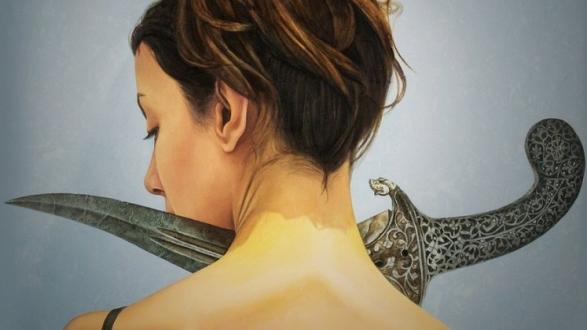"It is difficult to find many bright spots in the lives of Persian women... Their liberty of movement, of action, and of speech is curtailed... In the prevailing social condition... they could not do anything unless [they were] helped by men... But some of the women maintain, and I agree with them, that their wisest plan is to go ahead and show what they can do. The day will come when the men will ask for their help." - Clara Colliver Rice, American missionary, 1923
____________________
I grew up in Iran with two very different grandmothers. As a young girl, I took at face value the fact that one of my grandmothers was a devout woman who never left her home without wearing a head scarf, and the other was a Western-educated progressive-minded woman who didn't think twice about swimming topless in the family pool. Yet both women were forces to be reckoned with: they were by no means subservient.
My maternal great-grandfather believed in the value of education and sent all of his daughters to foreign-language schools, refusing to marry them off before their twentieth birthday at a time when sixteen was thought to be almost too old for a girl on the marriage market. My maternal grandmother was not only fluent in English, but also a very independent, feisty lady who used to walk miles every morning on her own in an era when women were expected to be wary of wandering out alone. She was an inspiration to her daughters, nieces, and granddaughters.
Attire does not and should not define any woman if it is by choice.
What was amazing about my paternal grandmother was that she had three sons and one daughter, yet she valued an education for all her children. Despite being a devout woman, she was not only not averse to sending her daughter to school in Iran's newly westernized climate, but in fact later came to the United States with her daughter so that my aunt could attend university. Unlike my grandmother, my aunt is not a religious woman, nor has she ever worn a head scarf. She is very fortunate to have been raised by a strong-willed, devout woman who was not opposed to having her daughter attend college in the United States. Granted, my grandmother accompanied my aunt to the United States, but this was during an era in Iran when a young woman going abroad to get an education was definitely not standard practice. So this audacious grandmother was also an inspiration to me.
It was during my scholarly journey into the Iranian women's movement that I began to reflect on how my grandmothers personified very different lifestyles and beliefs. In the course of my academic research, I came to realize why women from disparate backgrounds in Iran have more in common than is widely assumed. With my audacious grandmothers in mind -- as well as generations of Persian women who have longed for equality -- my commitment to a woman's right to determine her own destiny was intensified. It was also these factors that strengthened my belief that attire does not and should not define any woman if it is by choice and not mandatory. I left Iran with my family when I was twelve years old and have been living in the United States ever since. I am humbled and grateful to reconnect with the history of the women in my country of origin. It is my hope that I will contribute in some small way to their ongoing struggle for empowerment. In fact, their struggle has become my own passionate cause.
Why did I choose to entitle this book Jewels of Allah? This book is based on my doctoral thesis on the women's movement in Iran, written in 2013 for Columbia University. I have rewritten the manuscript solely as an homage to all Iranian women who for centuries have struggled and continue to struggle against a discriminatory gender ideology imposed and justified by hardline conservative factions as the will of "Allah" (God, in the Muslim world). The title is meant to convey that women, who have been ordained as inferior, are in fact the jewels of the Creator.
In researching the feminist movement in the West, I came across a quote by American suffragist and women's rights activist Alice Stokes Paul (1885-1977). She believed in the importance of women joining together collectively in order to advance the cause of women's equality. In 1923, she described the women's movement in this way:
I always feel that the movement is sort of a mosaic -- each one of us puts in a little stone, and then you get a great mosaic at the end.
Inspired by the mosaic image, I recognized that it also reflected what is occurring in Iran. Like my two grandmothers, Iranian women have different perspectives and attitudes, yet they are united in the desire to be free to follow their own path. Every woman is a unique gemstone, and I have faith that together they will change the course of history in their homeland.
____________________
Dr. Nina Ansary, Ph.D., is a historian and expert in the Women's Movement in Iran. She is the author of the book Jewels of Allah: find it here.
Originally published by the Huffington Post




